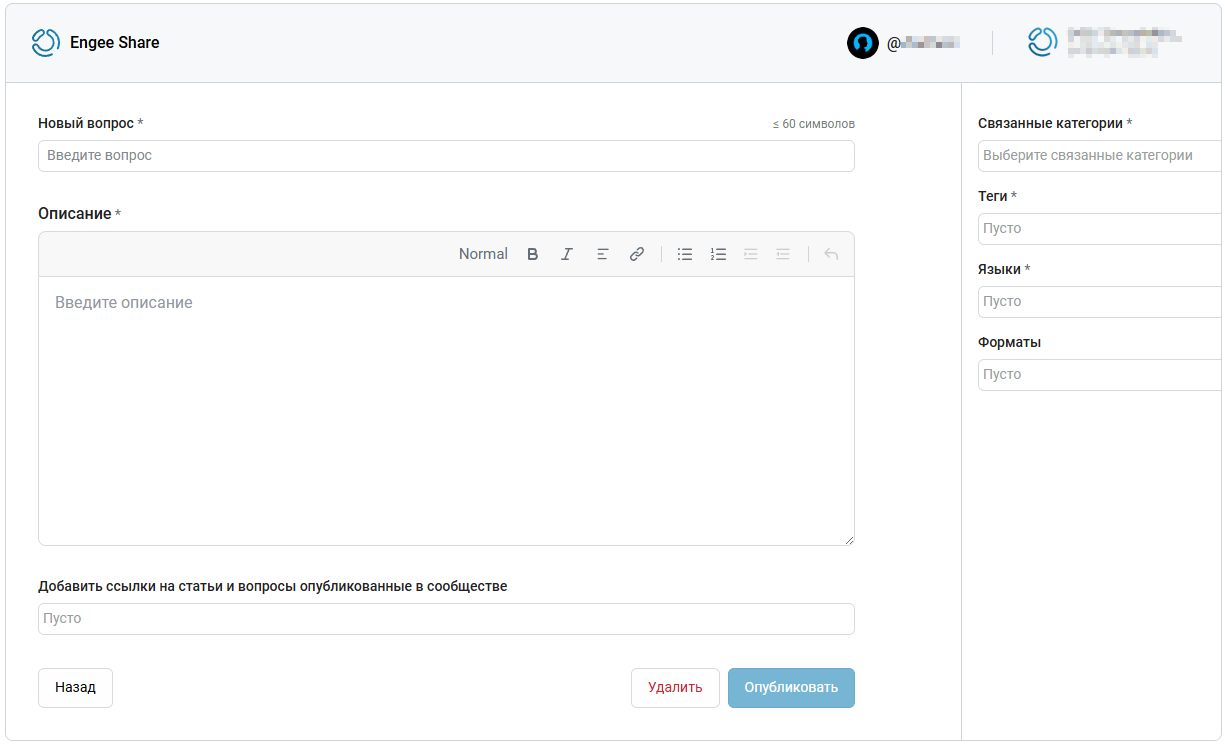Engee Community
Engee Community is a platform where Engee users can share knowledge and experiences. You can publish your own examples and projects in the community, search for answers to your questions, and study educational materials.
You can join the community:
-
From personal account Engee via the "Community" button:
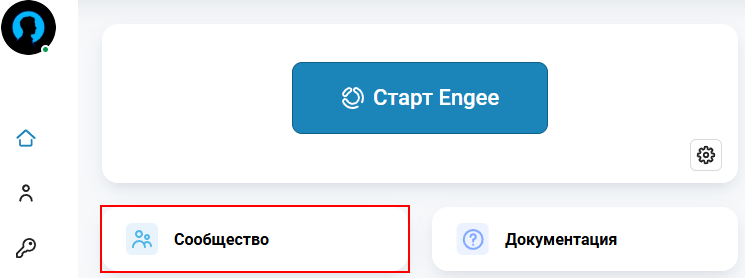
-
From the Engee session by clicking on the "Documentation»
 in the workspace and by selecting "Community of users»:
in the workspace and by selecting "Community of users»: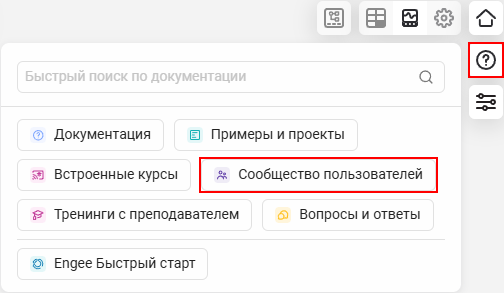
-
Directly by link.
At the same time, even unregistered users or those who do not yet have access to Engee can view all community materials without restrictions!
Main sections
The Engee community consists of three main sections (tabs):
-
Examples and projects
-
Questions and answers
-
Engee Academy
Examples and projects — here users share their developments, show solutions to problems using Engee and talk about how to apply the platform in practice.

Questions and Answers — Here users can search for answers to already published questions or ask their own.

| Only authorized users can post a new question or leave a comment. |
Engee Academy is a section with educational materials and courses that will help you understand various scientific fields in an interactive format.
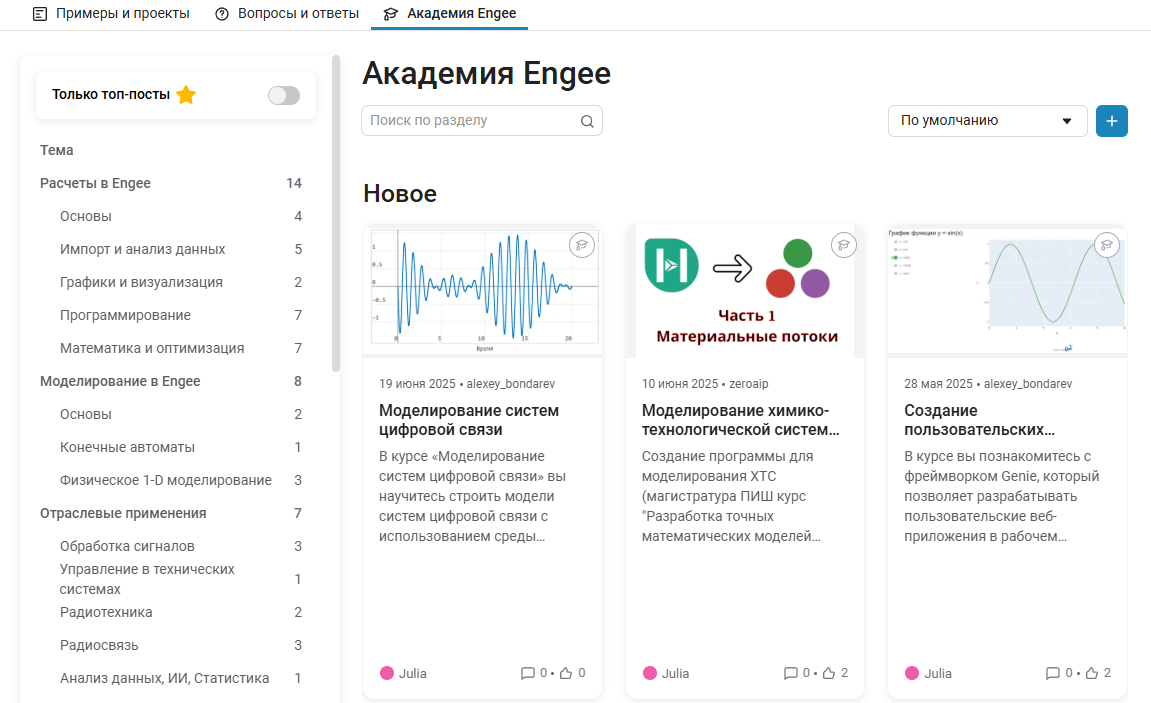
Each course can be started directly in the Engee session using the button  .
.
| Users without access to Engee can view course descriptions, but not launch them. |
Navigation and search
All three tabs have common elements. On the left is a list of topics by which publications can be filtered.:
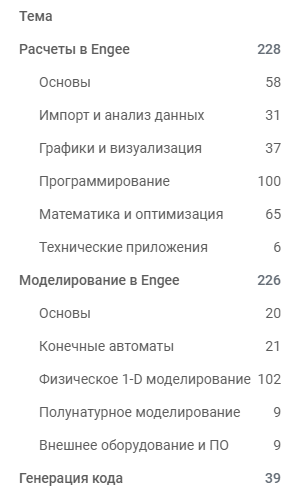
Additional filters appear below as you scroll — by programming languages, file formats, difficulty level, etc.:
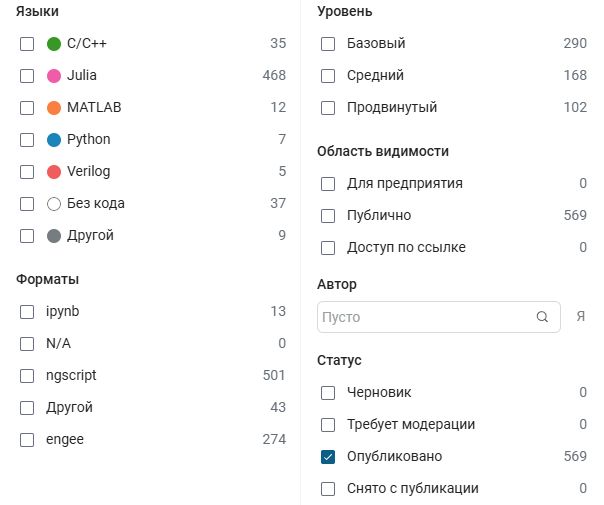
To reset the filters, click on the "Reset filter" label at the bottom of the page or uncheck the unnecessary filter.:
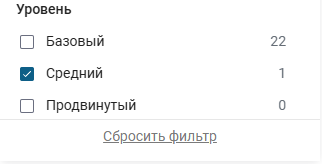
There is a sorting on the right: by default, top posts are displayed, but if necessary, the list can be sorted by popularity, rating, number of comments, publication date or last update. These filters can be combined with the filters and topics on the left, which allows you, for example, to find the most recent publications on the desired topic.
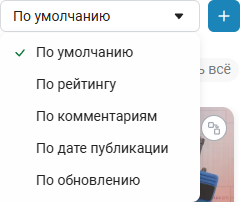
There is a search bar at the top of the page. A quick search is performed based on community materials only, and when you click the "All Results" button, the search covers both the community and the official Engee documentation. Thus, if you can’t find the necessary information among the community posts, you can switch to an advanced search across the entire Engee knowledge base with a single click.
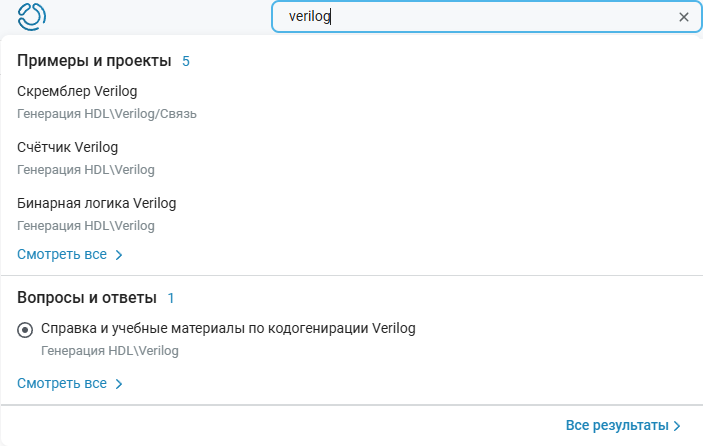
Below is a search for the current section, which works only on community publications.:

User Menu
Your EngeeID (@your_id) is displayed in the upper-right corner of the interface. If you click on it, the user menu opens. The following sections are available in this menu:
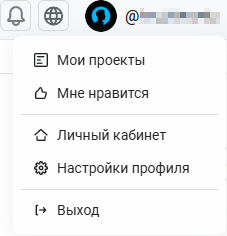
-
My Projects — a list of all your publications (examples, projects, courses) that you have posted in the community.
-
I like — the materials that you have marked "Like".
-
Personal account — transfer to the personal account of Engee (outside the community).
-
Profile Settings — manage profile data in your personal account Engee.
Also available:
-
Button
 to open the notification window:
to open the notification window:
-
Button
 to open the language change and block localization window:
to open the language change and block localization window: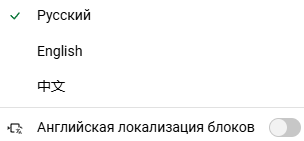
-
Button
 to open the Active License Management window:
to open the Active License Management window: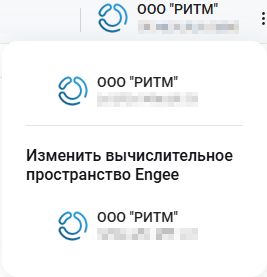
How to create a publication
In the Engee community, you can publish various types of materials, from simple ones scripts up to full-fledged libraries, courses and examples. You can start from scratch and write everything. manually, or download a ready-made repository from Engee or Git. For each publication, you can choose who it will be available to: all users of the community, only members of your company, or only those with a direct link.
Choosing the type of publication
There is a plus sign next to the sorting in the right corner ( ), which is available on all tabs. When you click on it, you can choose which section you want to publish in.:
), which is available on all tabs. When you click on it, you can choose which section you want to publish in.:
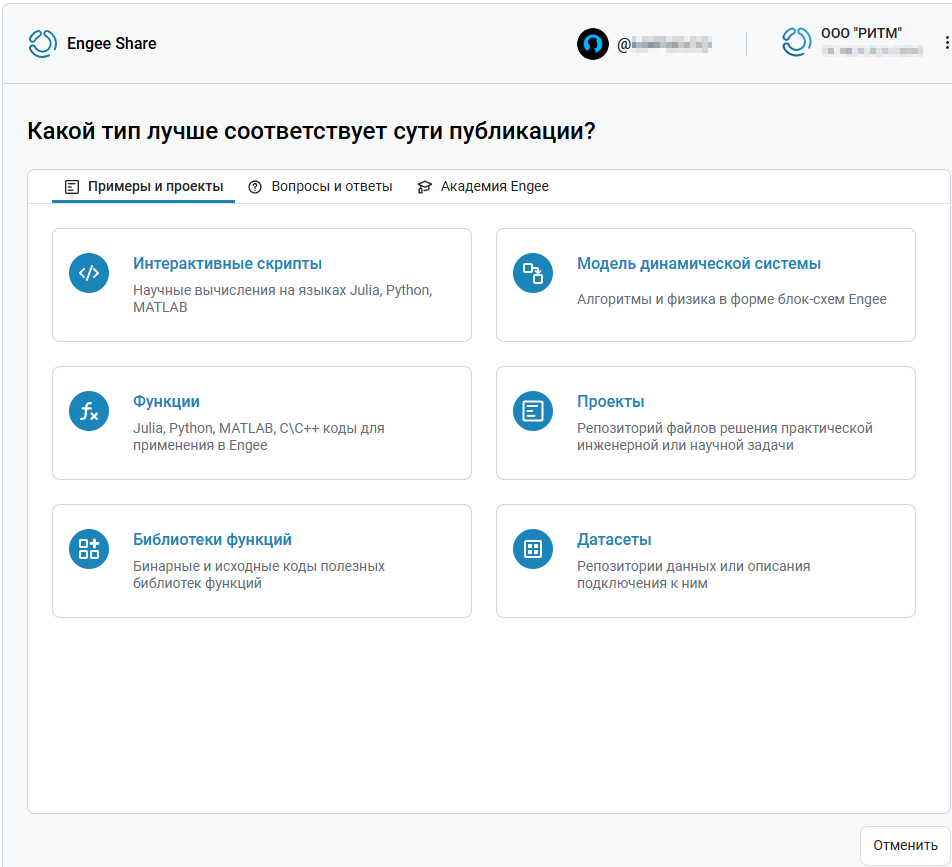
For example, in Examples and Projects, you can create a script, project, or library. In the "Academy" — a course, lecture or exercise. In the "Questions and Answers" — ask a question.
Publishing from a ready-made repository
After selecting the publication type, a draft creation window opens.:
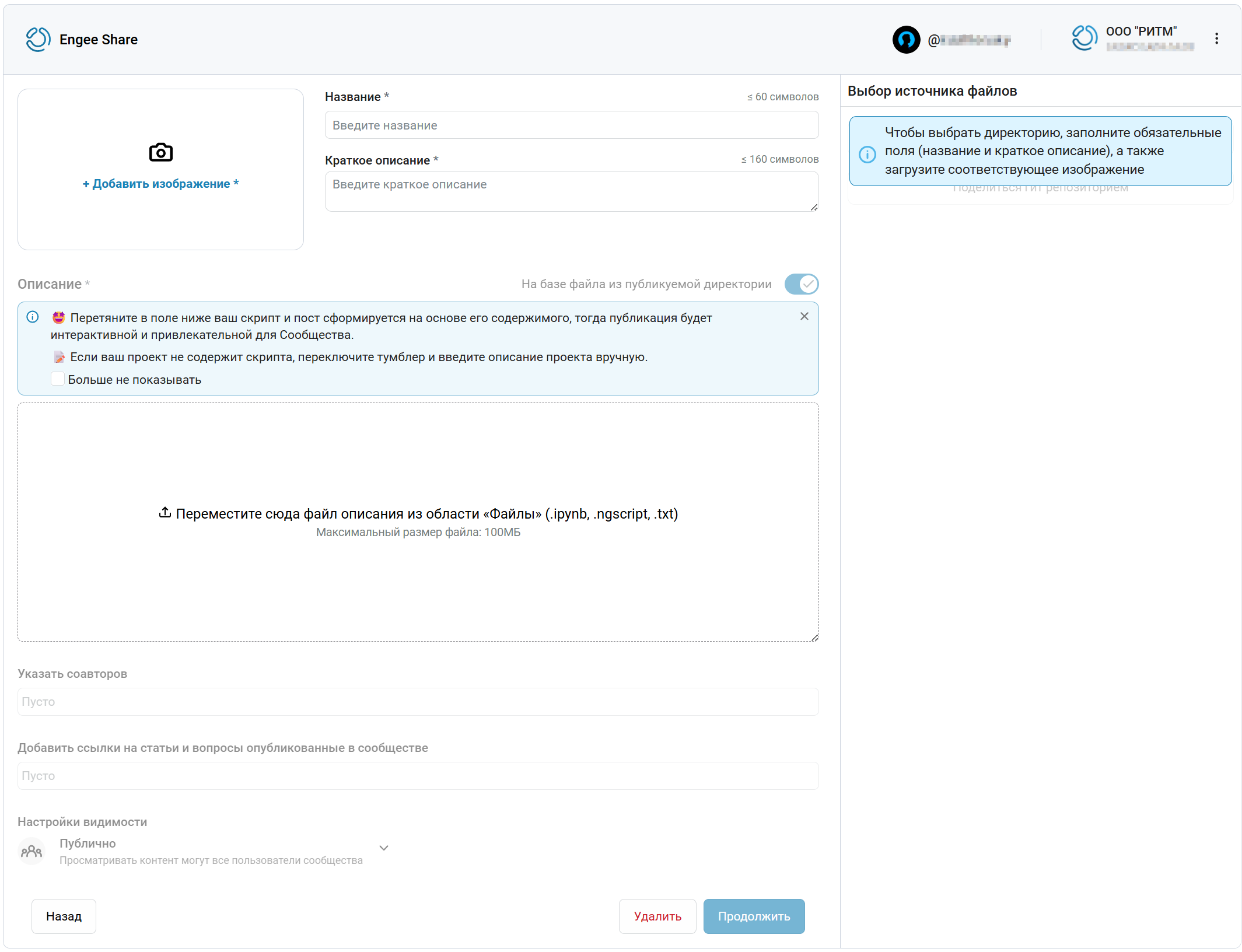
First you need to fill in the required fields (marked *): name, short description, add an image. After that, you will be able to select the file source (right menu).

The file can be selected from file browser Engee  (Share the directory) by connecting the session directly from the workspace (it will take time to start the session).
(Share the directory) by connecting the session directly from the workspace (it will take time to start the session).
Simply drag and drop the desired file from the file browser in the right pane to the download area on the left. It also supports transferring files from an external Git repository via a link (share a git repository, for example, with https://git.engee.com/).
Next, you need to specify the publication visibility setting.:
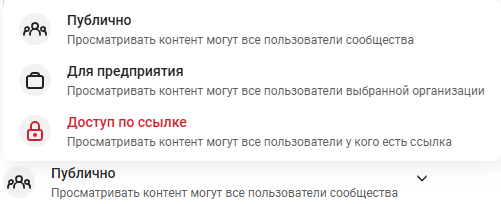
-
Publicly — the post will be available to everyone.
-
For the enterprise — the post will be available only within your organization in Engee.
-
Link Access — The post will not be visible in the community to other users except those who have a direct link.
Additionally, you can specify co—authors by Engee ID and attach links to other community materials, for example, if your post is related to a previously published article or question.
Then click "Continue" and in the new window, specify the required parameters: category, tags and language so that the post can be found through filters. Optionally, you can set the publication format and difficulty level.
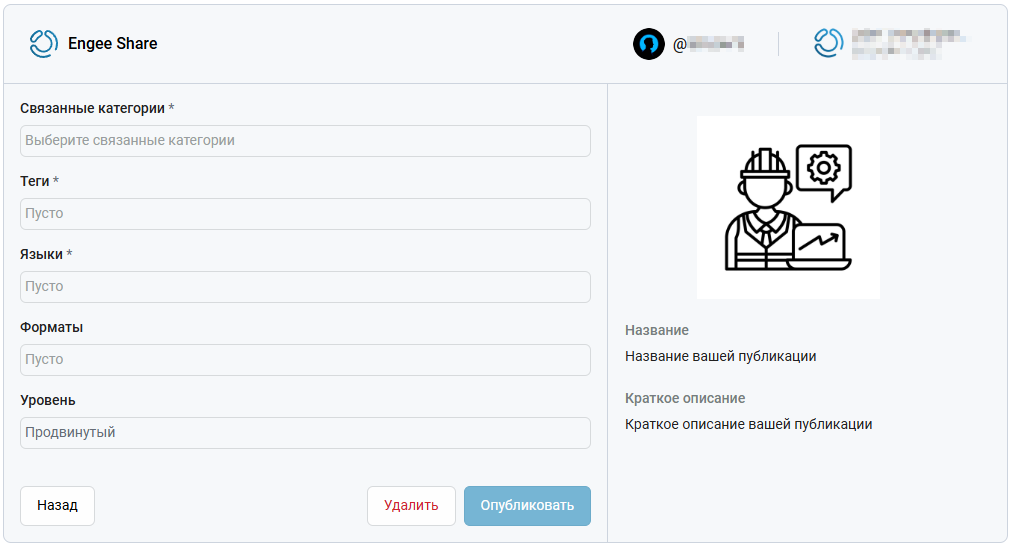
When everything is ready, click "Publish". The post will be submitted for moderation and will be published in the community after verification. Regardless of moderation, you will immediately see your publication in the "My Projects" section.
Publishing manually
If you want to write the text manually, without using Engee files or Git hosting, then switch the toggle switch "Based on a file from a published directory":

Now, instead of the download field, a text field with Markdown markup language support will appear.:

The rest of the publishing process is similar to what is described above.
